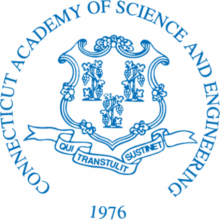When Gene Banucci was in seventh grade, he wrote an essay about what he wanted to be when he grew up: a chemist and an investment banker — unusual interests for a thirteen-year old! But that’s just what he became: a chemist and CEO of his own company, ATMI, that employs over 750 people worldwide with a market capitalization exceeding one billion dollars. Despite these accomplishments, he wants to be known best for his contributions to the progress of mankind.
Dr. Banucci came from humble beginnings, growing up in Racine, Wisconsin. His father worked for the railroad, his mother in a retail shop. Dr. Banucci recalls that he was thirteen when Sputnik went into orbit. This event “catalyzed an interest in all things scientific;” later, in high school, his chemistry teacher made chemistry “a lot more fun.” An avid reader, Dr. Banucci was the first in his family to go to college. He earned a scholarship to Beloit College, where he majored in chemistry. He credits his professors with developing his speaking, writing and leadership skills — skills he believes are critical to being a good scientist. After completing his PhD in organic chemistry at Wayne State University, he was hired by General Electric Company where he developed his first patent at the age of 29.
“Creativity without the opportunity to create doesn’t do much,” he says, and he feels lucky to have both. He believes he inherited his creativity from his father, whose family was very creative. Dr. Banucci’s inventions are his creative and scientific response to needs that require attention. He explains that his company’s greatest invention and the one of which he is proudest, derived from meeting a fire chief.
The story begins in Silicon Valley, where microchips that power computers, cell phones, and Game Boys are manufactured. In emergencies, firefighters were reluctant to enter chip manufacturing plants because of toxic gases used in the manufacturing process. The fire chief asked if the storage and use of these gases could be made safer.
Dr. Banucci and his team learned of work being done on trapping these dangerous gases in absorbent materials containing millions of tiny holes. These new materials acted like sponges, except the gases completely adhered to the material and could not be released simply by opening a canister. Dr. Banucci and his team redesigned the material by changing the size of the holes, thus allowing workers to safely extract the gases. The end result, the SDS (Safe Delivery System), is now employed in every chip manufacturing plant in the world, making both the workplace and environment safer.
Dr. Banucci has this advice for young people, “Our world is changing at an increasingly faster and faster pace. Science and technology are driving those changes. If young people today do not understand the scientific reasons that explain the changes, they will have little chance to adapt. It’s not the strongest of the species that survive but the most adaptable.” Dr. Banucci has been a member of the Connecticut Academy of Science and Engineering since 2007.


